Text

In 2022, I finished 37 books.
I started strong but slacked off somewhere in the middle, distracted by all the nice days calling me outside to ride my bike, some travel (road trips and flights) that seemed more geared toward podcasts (though a few audiobooks made their way into my ears), and life...
I am stoked though that several on this list are 750+ pages long, including my absolute favorite book of the year: ***The Love Songs of W.E.B. Du Bois by Honorée Fanonne Jeffers.
If you're looking for a good read, a few of the other books I couldn't put down were:
My Monticello by Jocelyn Nicole Johnson
South to America: A journey Below the Mason-Dixon to Understand the Soul of a Nation by Imani Perry
Braiding Sweetgrass: Indigenous Wisdom, Scientific Knowledge, and the Teachings of Plants by Robin Wall Kimmerer
Tomorrow and Tomorrow and Tomorrow by Gabrielle Zevin
And if you love animals, science, or just want something so geeky that you'll underline half the book and drive people around you crazy by constantly asking: "wanna hear a fun fact?" check out An Immense World by Ed Yong.
As always, I keep tabs on who I’m reading. I started this a few years ago, as a bit of a corrective measure, to make up for decades of reading books from authors who offered up a very white, very male view of the world. Of the books I read this year, 57% were by Black, Asian, Latinx, and Indigenous authors — down just 2% from last year. And 62% were written by women — which is up from 49% last year.
Here are the past year's books, with recommendations and stats:
2021
2020
2019 and 2018
0 notes
Text
Is this the year?
This just may be the year I come back to this blog for good.
Everything, everywhere else online is pretty awful. Between the bots, the hate speech, and the crappy algorithms and censorship, other corners of the Internet that used to be ok are now practically unbearable.
Then when you add in megalomaniacs with shifty ethics like Elon and Zuck running the show it makes me question their motives. Is it just to make money and turn you into the product or is it to ruin/subvert democracy? It's gross either way.
I've always appreciated the community-building aspect of online forums. I've also always felt like I have a lot of disparate interests, I read a lot, look at a lot, and thus I like to share interesting things in a well-curated way. I also, not-so-secretly, like lists and having a way to keep track of things.
So while my portfolio will continue to live at melissalyttle.com, I may be sharing more outtakes and one-offs here (instead of IG). And while I have a Substack where I occasionally write longer and more thoughtful posts about the business of photography, covering conflict, reviving an old Dear Young Photographer, and musing on things I'd go back and tell my younger self. I also share a lot of great links week-to-week (instead of on Twitter). And may start posting that here, too, and allowing this blog to become an archive of record.
Who knows? This may just be the year that I leave the others and find something new altogether. TBD.
2 notes
·
View notes
Text
Before his 10-year career as a photojournalist at The State newspaper in Columbia, SC, Rich Glickstein (b. 1969) was a U.S. Navy cryptologist. (He spent a lot of time on a submarine, had a great pair of combat boots when I first met him that had stepped foot on about 20 countries, and he once said that if he told me what he did while enlisted, he'd have to kill me!). In 2011, Rich wrapped up his MSW and became a licensed Clinical Social Worker and trauma therapist. He lives in Atlanta, GA with his wife Julie and their four-legged children.
A terrific podcast interview about life after journalism /Twitter / IG
How did you get to where you are today?
Like most newspaper folks in the late 2000s, I found myself in a newsroom bleeding staff from layoffs and heartbreak. When I changed careers I knew I needed to do something that continued to help others in some way, particularly other journalists and other veterans.
What makes you happy?
Learning something new and my wife (not necessarily in that order).
Who or what inspires you?
Asking Socratic questions to spur introspection, and seeing someone brighten with insight when they get it. It’s like showing something in a new way through a photograph.
What’s the single best thing you've seen lately that impacted or inspired you the most?
The thing that’s most inspired me in the last week has been defiant the videos made by Volodymyr Zelenskyy to the Ukrainian people. Most notably the one in which he says thanks, but no thanks, to the U.S. State Department. “The fight is here. I need ammunition, not a ride,” he says in part.
What advice would you give your younger self?
Don’t fight as much. Do the things you thought you didn’t need to do, follow through in your obligations, and keep asking yourself, “What opportunity does this present?”
How do you measure growth?
I can measure growth, improvement, and success by observing my relationships. Are they fulfilling? Are they enlightening? Are they fun? If those are ‘yes’ answers then I know I’m on the right track.
What’s next for you?
I’m starting private psychotherapy practice and consultation work. It’s the psychotherapy equivalent to freelance photography.
What would you love to do that doesn’t involve your current craft?
Something I’d like to do that doesn’t involve my current craft? I’m not sure that meshes with me. All of the things I’ve done have some sort of overlap. Whether it’s intelligence collection (when there was a Soviet Union), working as a photojournalist, or doing psychotherapy; they all have a common thread of carrying a message, understanding others, understanding self, or using the helpfulness of a story thread for any of that to better someone or something. If it’s another craft, I think teaching might be next. I’ve always been good at breaking down lessons and teaching things in ways people can digest sometimes fairly complicated or abstract ideas. Most recently, try explaining how the brain and the body weave together, record, and remind us of life experiences. It all comes back to the intersection of story and visceral experience. So teaching is something I think might be in my future at some point. Not sure what form that will take just yet.
2 notes
·
View notes
Text
On Creativity: Matt Eich
Matt Eich (b. 1986) is a photographic essayist working on long-form projects related to memory, family, community, and the American condition. He balances his freelance career, and the small book imprint he publishes under, with life as an Assistant Professor of Photojournalism at George Washington University. Eich lives in Charlottesville, VA with his wife and their two daughters. Also, if you've always wondered, it's pronounced EYE-ch.
Website / Twitter / IG
How did you get to where you are today?
I started making pictures around the age of 10 in the wake of my grandmother's death from Alzheimer's disease. Growing up in isolated rural areas of Virginia and homeschooled for much of my youth, I've always found myself on the outside looking in. During high school, I played a lot of music, which was a good outlet for teenage angst. I studied photojournalism in college, became a father at the age of 21, and poured my anxieties about survival into trying to carve out a path in the dark woods of freelance photography. At this point, I've been a working photographer for nearly 17 years and I teach full-time (which is another way of saying I'm learning what I don't know, full-time).
What makes you happy?
This is a question that I don't encounter often (in life or in the creative process). I think there is a misconception that good art only stems from suffering. It can, but a better source is love ... love for the people around you, love for the world, love for the way that light shapes our perceptions of things. I used to be able to say that photography made me happy, now my relationship to the medium is tied up in complex feelings and anxieties, so it has become harder to find joy through photography. I still get excited about the medium, and it keeps pulling me back somehow.
What really makes me happy these days is time with loved ones, meaningful activities with my children, those times when a student seems to "get it", opportunities to freely create and express (in whatever medium), and rare moments of silence when my mind isn't racing.
Who or what inspires you?
Lately, it has been less photography (though I'm constantly looking, and frequently amazed). I've always drawn inspiration from music, but poetry has been taking a more prominent place in my creative process. I'm inspired by people who manage to create meaningful contributions to their field (whatever it may be) while also maintaining healthy relationships and those who can move through life with a sense of joy and wonder.
What’s the single best thing you’ve read lately/the best documentary or movie /or an experience you’ve had that most impacted you?
I enjoyed watching The French Dispatch with my daughter recently (she's a Wes Anderson fan), but that isn't exactly speaking into the space I'm trying to create from. The work I'm currently making is in response to a poem by Charles Wright, from his book of poems, Black Zodiac. Lately, I've also been reading Terrance Hayes, Tim Seibles, (along with other poets), and I enjoyed "The Triggering Town" by Richard Hugo. I find a lot of comfort when reading the words of Robert Adams.
What advice would you give your younger self?
Slow your roll, your self-worth is not tied to your creative output. Also, just because you care about photography doesn't mean photography cares about you.
How do you measure success?
For a lot of folks in the photo industry, I think success is measured by external factors ... did it win an award or get a big exhibition? Are you getting hired by that fancy client or making lots of money? External validation as markers for growth/improvement/success tend to be shortcuts to depression and heightened anxiety. If I'm looking for internal markers, a better guidepost might be am I surprising myself? Does the work being produced feel like my natural voice, or me trying to be something I'm not? Am I finding any joy in the process? Am I growing as a person, as well as an artist?
What’s next for you?
Attempting to stay sane, keep my head above water, spend less time on what doesn't matter / more time on what does, and keep making work.
What would you love to do that doesn’t involve your current craft?
Play piano, paint, write poetry with a visceral clarity.
0 notes
Text






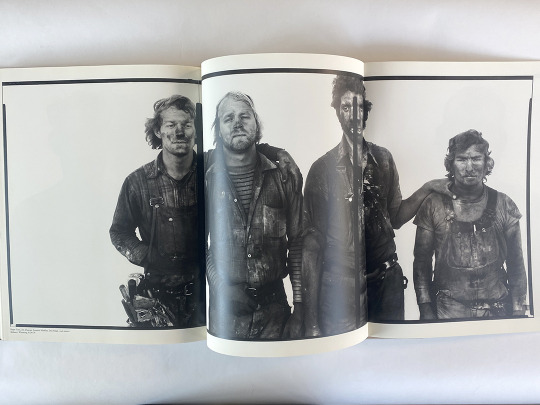


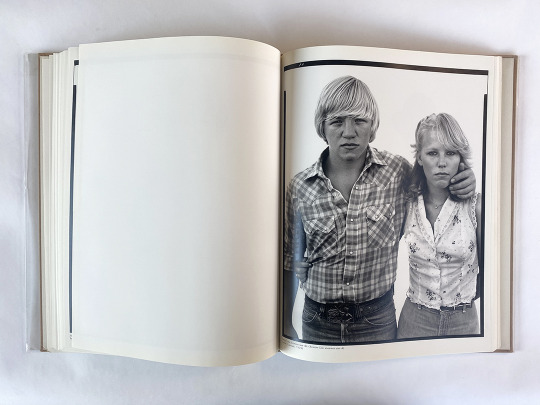
When I worked at newspapers, portraits were an afterthought. Portraits were the easy way out when a reporter forgot to put in an assignment and we still needed "art" to go with the story or when the photographer was told to be somewhere and nothing was happening. When I went freelance, it was a skill I knew I wanted to get better at.
So I started a personal project making portraits of formerly incarcerated folks. I wanted to keep it simple and to strip out all of the socio-economic indicators and other factors that may clue you into who this person is and where they came from. I wanted to keep it real, and have the viewer really only see them, and how they choose to present themselves to you. To me. I talked to the people I was photographing and reminded them that it was their photograph too.
I think about that a lot. I've always my photos to say more about the person in front of the camera than they do about me, the person behind it. There are amazing portrait photographers who do some incredible things with lights, props, gimmicks, and who turn the scene into a production. And while I look at those images in awe, I respect the pared-down approach a lot more.
I've probably referenced Richard Avedon's In The American West more than almost any other photo book on my shelf. It was certainly the guiding force for that project, where I emulated it as best I could: white paper backdrop, taped to a wall, photographing in open shade, and using only natural light. The only thing I did differently was to use a 35mm camera. I was way too scared to use a large-format camera.
Avedon was commissioned by the Amon Carter Museum in Fort Worth, Texas to continue building an entire body of work around a portrait he had made of a ranch foreman. The museum sponsored him and agreed to an exhibition with the negatives and prints becoming a part of the museum's permanent collection. Avedon traveled with his 8x10 camera through 189 towns across 17 states, photographing 752 people — Hutterites, oil field workers, coal miners, farmers, drifters, prisoners, waitresses, and more — between March 1979 and October 1984.
In The American West opened to the public in 1985 and critics were critical. "This is not our American West," a reporter for the Fort Worth Star-Telegram wrote. Others called the work cynical and cruel. But the true measure of success was when Avedon shared the results with the folks in the photos, many expressed appreciation, and even pride. These photos ask the viewer to look at and consider the hardships, to reject stereotypes, and to really see the people that might otherwise go unnoticed. And a lot of that is because the person sitting for the photo almost demands it with an intense gaze, looking directly into the lens that forces you to not look away.
Or as Avedon said of this work:
A portrait is not a likeness. The moment an emotion or fact is transformed into a photograph it Is no longer fact, but an opinion. There is no such thing as an inaccuracy in a photograph. All photographs are accurate. None of them is the truth.
13 notes
·
View notes
Text
"Many of the subjects cried, some even before the camera was raised. Others fell to the floor. Sometimes the photographer, Cédric Gerbehaye, moved from behind the viewfinder to hold them in his arms and comfort them.”
0 notes
Text
On Creativity: Eric Maierson
Eric Maierson (b. a long time ago) is a writer and two-time Emmy-winning video editor and producer based in Brooklyn. Eric worked at MediaStorm for 11 years and recently started a new job as a senior editor at Blue Chalk Media. He writes a great column called It's a Process, It's a Process, It's a Process for the NPPA's News Photographer Magazine, where I got to know him through great pieces like 52 Things I Know About Making Stuff. You can also subscribe to his weekly newsletter (5 great links, no spam). It's one of my personal favorites, and one I usually click on every link in.
Website / Twitter / IG
How did you get to where you are today?
When I look back at where I began, I think the common thread throughout my career has been a combination of being open and curious about new experiences — even when they were frightening. Plus, a lot of dumb luck.
What makes you happy?
Big stacks of unread books, empty days that I can fill however I’d like, cuddling with my dog, waking up next to my wife, a good day of work.
Who or what inspires you?
I won’t names because I don’t want to leave anyone out but my friends continually make me jealous in the best possible ways.
What’s the single best thing you’ve read lately/the best documentary or movie /or an experience you’ve had that most impacted you?
The Truffle Hunters is a gorgeous documentary set in Italy about old men and their dogs.
What advice would you give your younger self?
Don’t be so afraid.
How do you measure growth?
I keep meticulous notes of everything I make. When I look back at the list, i ask if I would have been thrilled to create these things 5 years ago. If the answer is yes, I know I know I’m doing pretty well.
What’s next for you?
I was just hired by Blue Chalk Media in Oregon and I can’t speak highly enough of the talent and kindness on that team. So lots of stuff in the works with them. I’m also making another animated film with Tala Schlossberg who is a terrific animator and illustrator. And I wrote two plays since the start of Covid. Once things cool down I’d like to see them staged.
What would you love to do that doesn’t involve your current craft?
I would gladly give up a few years of my life in exchange for being able to draw well.
0 notes
Text
Music is a salve for what ails you.
I would never dare pretend that this is a Top 10 list of the best Tiny Desk concerts, there are too many great ones to choose from. So what I will say is that these 10 bring a smile to my face. A big part of that is because of the pure joy I feel from the artists while watching them perform in such an intimate venue.
Tiny Desk lets them focus on the music. It lets them connect with people. And it gives me a glimpse of what it must’ve been like to be one of 50 people packed into a bar catching a glimpse of that greatness before they were big time. "It's just me. There's no dancers, unfortunately," Taylor Swift quipped. And I’m glad there aren’t, especially because when you peel back the layers there’s such incredible talent at the core.
youtube
”Tiny ASS desk— tiny, tiny ass.” Quite possibly the best 16 minute concert ever. What an incredible presence. The voice, the commentary, the flute, the charm, the mad skills. Lizzo’s got it all. At this tiny tiny little ask desk… this desk is so small, my thigh barely fit underneath it."
youtube
High school Melissa is swooning and so freaking happy right now. The Pixies Tiny Desk concert is great, too, but it's not the same without Kim Deal.
youtube
DC GOGO LEGEND, CHUCK BROWN, Y'ALL. I love seeing this many people crammed in that space just rocking it.
youtube
I didn't know who Hobo Johnson was when I saw this Tiny Desk the first time, and I was totally smitten. It's equal parts raw and silly and a whole lot of fun. Fun fact: their one-shot DIY backyard video that landed them here on NPR's Tiny Desk now has 21-million views.
youtube
"I'm Taylor, welcome to my Tiny Desk Concert... Tiny Desk is one of my favorite corners of the internet... I just decided to take this as an opportunity to show you guys how the songs sounded when I first wrote them."
And if you haven't seen the doc Miss Americana, it's great too.
youtube
Alabama Shakes front woman Brittany Howard absolutely brings it. In red.
youtube
When I think of a joyful Tiny Desk concert this one comes to mind, immediately. I also love what NPR Music's Bob Boilen said about it: "Like the ceiling can't hold us" had Macklemore standing on my desk and shaking the dust off the ceiling tiles. Watching this video fills me with that inspirational feeling we shared watching it happen: I'm still cleaning dust around my desk, but it only makes me smile."
youtube
With an incredibly talented gospel choir backing Chris Martin of Cold Play, how could this be bad?! Seriously, those harmonizing vocals on "Viva La Vida" give me chills. And then they threw in a Prince cover. Wow.
youtube
This Tiny Desk concert was my introduction to Natalia Lafourcade. It's beautiful. She's incredibly charming. Her voice is perfect. And of you were to peek at my Apple Music stats you'd realize she quickly became one of my favorite and most listened to singers.
youtube
Pat Benatar has still got it. She and her husband and long-time creative collaborator Neil Giraldo are amazing together, and the playful back-and-forth is hilarious. Her raspy voice on "We Belong" is incredible and it might be one of my favorite versions of this classic. And right after that, the hilarity before "Promises In The Dark" is worth sticking around for.
0 notes
Text
full stop

I’m really enjoying putting a weekly newsletter out, and carefully curating some cool/inspiring/fun links to share. The next installment of full stop drops Friday morning. If you’re not subscribed, there’s still time. melissalyttle.substack.com
0 notes
Text

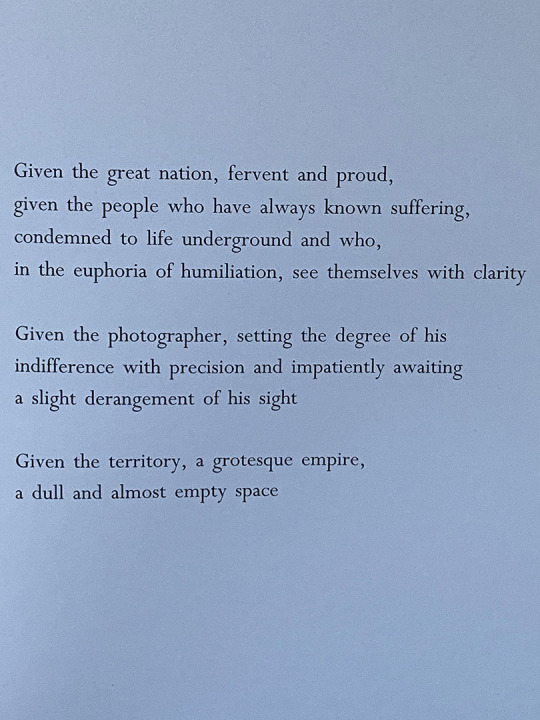
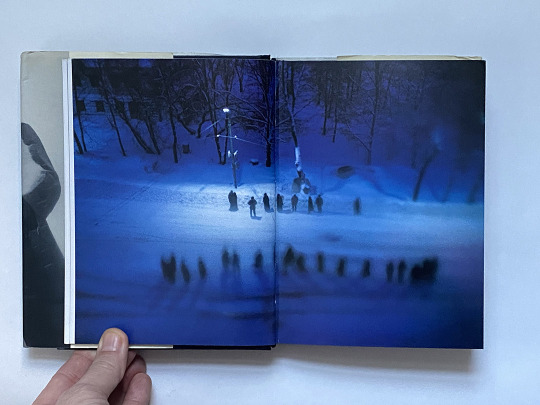





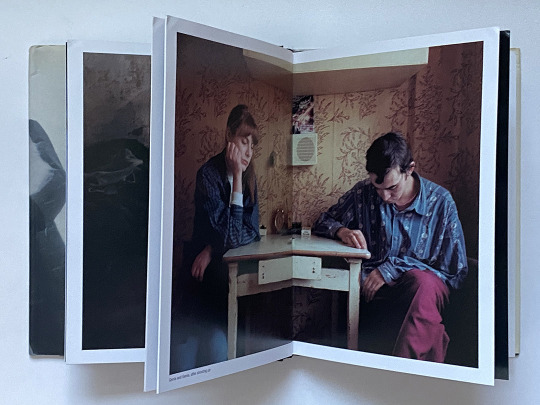
There are some words that simply don't translate from one language or culture to another. One such word is toska (ˈtō-skə) which in Russian roughly translates to: sadness, melancholia, lugubriousness.
According to Vladimir Nabokov "No single word in English renders all the shades of toska. At its deepest and most painful, it is a sensation of great spiritual anguish, often without any specific cause. At less morbid levels it is a dull ache of the soul, a longing with nothing to long for, a sick pining, a vague restlessness, mental throes, yearning. In particular cases, it may be the desire for somebody of something specific, nostalgia, love-sickness. At the lowest level, it grades into ennui, boredom."
So many photographers I know count Luc Delahaye's Winterreise among their favorite photo books, and I have to believe it's because it makes them feel something.
For me, what helps set the mood is the color palette (warm and faded inside v. cool and sharp outside), the full-bleed images which are almost claustrophobic in nature and force you to be in the entire scene with him, and the intimacy of being invited into these spaces that may offer up a respite from the weather but are still filled with melancholy and sadness. The loneliness. The despair.
Delahaye followed the Trans Siberian Railway across Russia from Moscow to Vladivostok, during the winter of 1998-1999, armed with only a Contax G2 and a 35mm lens. The images are painterly and raw. And they take you inside the homes, the minds, the lives of people you wouldn't ordinarily meet. The last dozen double trucks in the book, however, are the blurred landscape of trees, alternating between light and dark, hope and despair, leaving the depths of what he just experienced behind him as he moves on.
No book comes closer to translating toska from a word into a feeling.
0 notes
Text
On Creativity: Jeff Sharlet
Jeff Sharlet (b. 1972) is a Vermont-based journalist, author, academic, editor-at-large, and executive producer of the five-part Netflix documentary “The Family,” which is based on two of his books.
No website, but a great interview / Twitter / IG
How did you get to where you are today?
After six books I had a heart attack at 44, immediately after I wrote what I thought would be the last sentence of my seventh. I survived, rewrote the book, started living healthy, and reorganized my life around living to at least 59 (and, I hope, longer), when both my kids will have graduated high school. Now I make every creative decision with that goal in mind.
What makes you happy?
Talking to strangers, then drinking some coffee and thinking about how to tell a story about the conversation as I drive on to the next one.
Who or what inspires you?
Writers and artists who take great pleasure in their work even if it's little-known.
What’s the single best thing you’ve read lately/the best documentary or movie /or an experience you’ve had that most impacted you?
Whenever the covid stress gets to be too much I turn to old noir movies. Right now I'm halfway through Samuel Fuller's 1953 film Pickup on South Street, from which I want to steal whole bolts of language. There's a story, but it doesn't matter that much--it's Fuller's fascination with and affection for details of people who'd otherwise be minor characters. One such is Mo, played by Thelma Ritter. She was 51 but she played an older woman--"I'm a clock winding down," she says--who slides sideways into center stage as a peddler of information, to cops and others, on the whereabouts of grifters, all in the service of "feeding" her "kitty"--her money roll--with which she dreams of buying herself a fabulous funeral. "I got a hole picked out in Long Island," she brags. It's a film that's brutally violent and yet deeply tender. A lot of the stories I tell are about brutal people and places, and movies like Pickup on South Street help me remember to see the gentleness that's also within them.
What advice would you give your younger self?
Try a little tenderness.
How do you measure growth?
I'm at a stage in my life where ambition feels like a distraction, so I guess I measure "growth," if that's the right word, by my ability to not care too much about how well a project fares in the world.
What’s next for you?
I'm just now assembling a manuscript for submission of a book called The Undertow, with a subtitle that might be "scenes from a slow civil war." Nonfiction stories on the currents that have brought us to this moment of dissolution in American life. (A version of the story about that church in Miami to which you contributed stunning photographs is one of them.)
What would you love to do that doesn’t involve your current craft?
I've been pretty lucky as a writer who's also gotten to work with photography, film, and audio. And yet I've never worked in the medium that was my first love, comics.
1 note
·
View note
Text
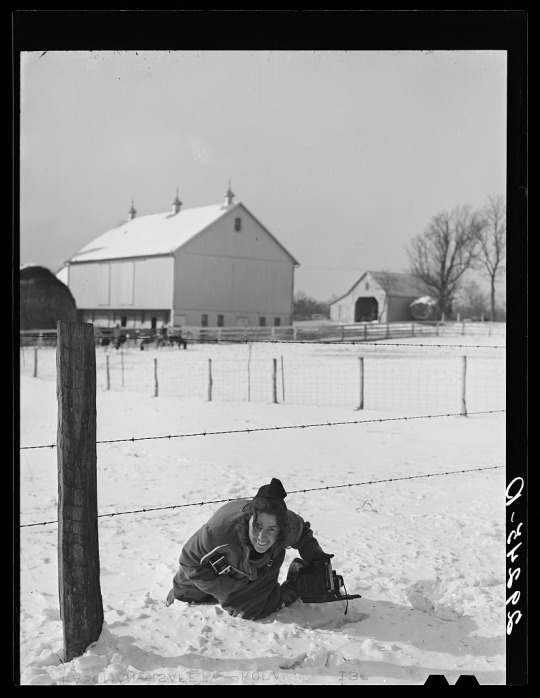
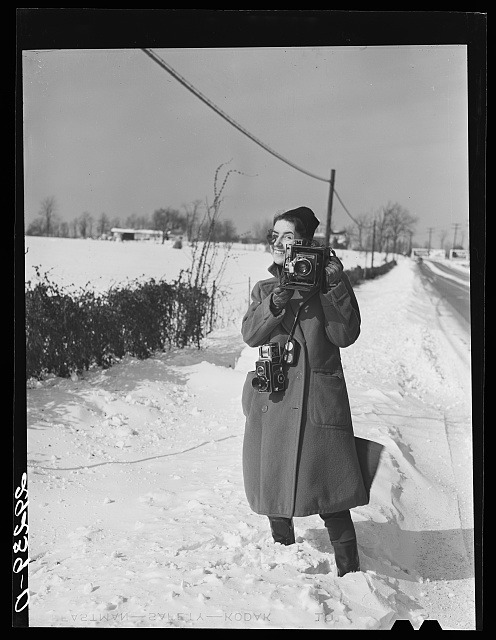
What sort of gift, not just for photography but for life, would you have to have to get pictures like these, I wondered. "Why haven't I seen these pictures before?" I kept saying to myself. "And who the hell is Marion Post Wolcott?"
My friend — historian, educator, and photographer — John Edwin Mason sent me a link to this terrific interview of Marion Post Wolcott that was done for the Smithsonian with a full transcript available. And if you want to hear her speak, there are about 5 minutes of audio, too.
The ICP has a solidly curated collection of her work. The Library of Congress has much more, including her documentation of Belle Glade and Pahokee down in the Florida Everglades.
---
citations for images above (left: Rothstein, Arthur, photographer. Marion Post Wolcott with Zeiss Ikoflex III and Speed Graphic in hand in Montgomery County, Maryland. United States Maryland Montgomery County, 1940. Jan. Photograph. https://www.loc.gov/item/2017779505/.
right: Untitled negative showing Marion Post Wolcott standing in snow with cameras. United States, None. [Between 1935 and 1942] Photograph. https://www.loc.gov/item/2017779499/)
2 notes
·
View notes
Text
On Creativity: Sol Neelman
Sol Neelman (b. 1970) is a failed athlete turned sports photographer living in his hometown of Portland, Oregon. After a decade as a newspaper staff photographer, he went freelance, which has given him the freedom to pursue a lifelong photo project on sports culture around the world and work for some rad commercial clients like Nike, Adidas, and Clif Bar.
www.solneelman.com / Twitter / IG
How did you get to where you are today?
I'm an introvert who discovered at Poynter Jr. High School in Hillsboro, Ore. that I could hide behind a camera while gaining access into other people's lives. Somehow that lead to a decade working for newspapers, which helped me fine-tune my skills and introduced me to incredible humans. During the past 15 years as a freelance photographer, I’ve leaned into my passion for dragging my friends to weird sporting events, where we make surreal photos, drink cheap beer, and laugh until sunrise.
What makes you happy?
Connecting with good humans gives me great joy. Finding random events and traditions around the globe warms my heart.
Who or what inspires you?
I'm always inspired when photographers and artists pursue projects that are extremely intimate and personal. Diana Markosian, who photographs her and her family's history and journey, comes to mind. I love when artists express themselves through their art. Ahmet Polat is great, too. He’s a photographer who does film and directs stage performances, and he's an amazing human. His intelligence and passion for exploring identity and masculinity in so many different art forms always inspires me.
What’s the single best thing you’ve read lately/the best documentary or movie /or an experience you’ve had that most impacted you?
Well, the Great British Bake Off had an incredible impact on me early on during the pandemic. The formula is very predictable, but the authenticity of the contestants is staggering. At the end of every episode, I found myself in tears, simply because they all cared so much about each other succeeding. I cared, too. My takeaway is that giving space to authentic people is all that matters when trying to make a compelling storyline.
What advice would you give your younger self?
I'd tell myself that life is a long song. Enjoy the ride and try not to rush things. I'd also encourage not waiting to pursue therapy, exercise, and hobbies.
How do you measure success?
If I slow down and catch my breath, I realize my success comes in the form of all the incredible friendships and connections I've made in my life. I'm very successful there. Somehow, I know so many great photographers who are even better humans. Though to be honest, I'm often guilty of gauging my success by the work I do for others. As a freelancer, the highs and lows are too extreme - and never-ending. My therapist asked me once: "If your freelance career was a relationship, would you stay in it?" And it's hard for me to say yes.
What’s next for you?
I'm about to dive into publishing my 3rd photo book on Weird Sports, which will likely happen this summer in Germany. My next step in that process is taking pre-orders and fundraising. (Editor's note: you can still pick up a copy of Weird Sports 1 and 2; they're both wonderful!)
What would you love to do that doesn’t involve photography?
I really have no idea, but it'd have to include travel and meeting new people over cheap beer.
0 notes
Text
I don’t believe in guilty pleasures. If you fucking like something, like it. That’s what’s wrong with our generation: that residual punk rock guilt, like, “You’re not supposed to like that. That’s not fucking cool.” Don’t fucking think it’s not cool to like Britney Spears’ “Toxic.” It is cool to like Britney Spears’ “Toxic”! Why the fuck not? Fuck you! That’s who I am, goddamn it! That whole guilty pleasure thing is full of fucking shit.
— Dave Grohl
1 note
·
View note
Text
Nurse Midwife
The caption for the photo below reads: Newborn Baby in Makeshift Crif near Cold Stove, 1951.
My friend Meredith Edlow commented on the photo on Twitter by saying: "Wow. Wonder what the story was here?"

In what I think is one of his best photo essays, ever, photographer W. Eugene Smith, on assignment for Life, photographed Callen for six weeks during her work at the clinic and on her rounds to see patients. It's an amazing story, and the entire thing is worth seeing. (The little red dot under the picture is the slide to get to the next.)
In December 1951, LIFE published one of the most extraordinary photo essays ever to appear in the magazine. Across a dozen pages, and featuring more than 20 of the great W. Eugene Smith’ pictures, the story of a tireless South Carolina nurse and midwife named Maude Callen opened a window on a world that, surely, countless LIFE readers had never seen — and, perhaps, had never even imagined. Working in the rural South in the 1950s, in “an area of some 400 square miles veined with muddy roads,” as LIFE put it, Callen served as “doctor, dietician, psychologist, bail-goer and friend” to thousands of poor (most of them desperately poor) patients — only two percent of whom were white.
Eventually, more than $20,000 in donations helped to build a clinic in Pineville, where Mrs. Callen worked until her retirement in 1971. Here's more on Mrs. Callen and her clinic.
1 note
·
View note